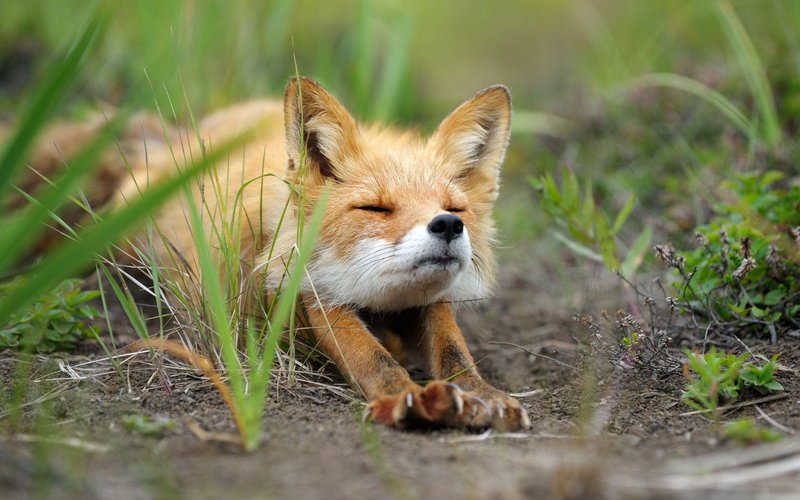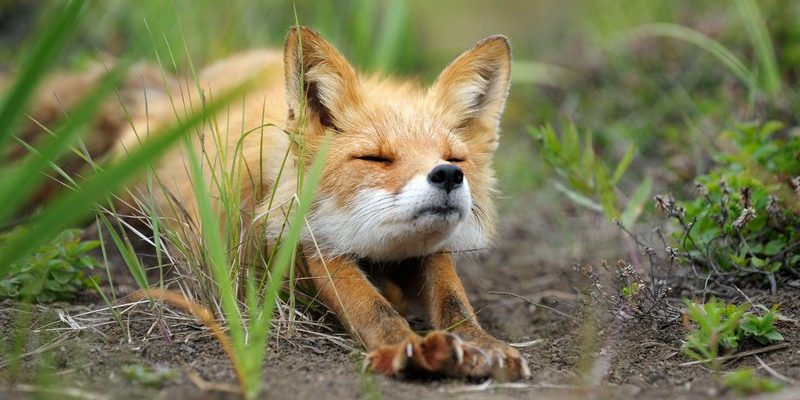
First, let’s paint a picture. Imagine a serene forest, the underbrush rustling with the small movements of wildlife. Suddenly, a flash of red darts between the trees. It’s a fox, and it’s as curious as it is clever. While these animals typically prefer to keep their distance from humans, they can sometimes be unpredictable. We’ll delve into their behavior, diet, and interaction with humans to understand whether they pose any danger.
Understanding the Red Fox
The red fox (*Vulpes vulpes*) is a striking creature commonly found across various landscapes—from urban areas to rural farmlands. They are sleek and agile, equipped with sharp senses that aid in hunting. Typically, you might spot them during dusk or dawn, when they’re out looking for food.
One of the remarkable things about red foxes is their adaptability. They can thrive in various environments, which is why they are often found in close proximity to human habitats. You might even see them rummaging through trash cans in search of snacks. While their cuteness can be appealing, this adaptability brings us to a crucial point: the more they interact with humans, the more we need to understand their behavior.
Can they be dangerous? While it’s rare for them to attack humans, their presence can lead to misunderstandings. Let’s dig further into their diet and social behavior to see how this can impact their interactions with us.
The Diet of the Red Fox
Red foxes are omnivores, meaning they eat both plants and animals. Their diet consists mainly of small mammals like rodents, rabbits, and birds, but they also munch on fruits, vegetables, and even insects. This varied diet is a big part of why they thrive in different environments.
Here’s the thing: their foraging habits can sometimes bring them too close to human food sources. When foxes begin to associate people with food—like the allure of a picnic basket or a poorly secured garbage can—they may lose their natural fear of humans. This behavioral change could lead to more frequent encounters, raising concerns about whether they might pose a threat.
Additionally, like any wildlife, red foxes can become rabid. Rabies is a viral disease that affects the nervous system and can be transmitted to humans through bites. It’s quite rare, but it’s a risk to consider, especially if a fox is acting strangely. Let’s take a closer look at these interactions in the next section.
Behavioral Insights: Are Foxes Dangerous?
Most of the time, red foxes are timid creatures. They prefer to avoid humans and retreat at the first sign of danger. However, there are exceptions. If a red fox feels threatened or cornered, it may exhibit defensive behaviors. This can include growling, baring teeth, and lunging, which can certainly be alarming.
In urban areas, foxes may become bold. They may approach humans more closely, especially if they’ve learned that food is available. It’s important to remember that while foxes can act aggressively if provoked, they’re not typically a direct threat to human safety. In fact, they would rather scamper away than confront us.
Still, it’s always wise to respect their space. If you encounter a fox in the wild, it’s best to stay calm, avoid direct eye contact, and back away slowly. Always remember, they’re wild animals with unpredictable behaviors.
Potential Risks: Rabies and Other Diseases
While rabies is a concern, it’s not the only health risk associated with red foxes. They can carry other diseases, like mange—an irritating skin condition caused by mites that can lead to fur loss and infections. While mange is not directly harmful to humans, it can indicate that a fox is unhealthy and possibly more aggressive than usual.
Rabies, on the other hand, is a serious viral infection that requires immediate medical attention if bitten. If you ever find a fox acting strangely—such as staggering or showing signs of aggression—it’s crucial to keep your distance and call animal control.
Foxes are also known carriers of fleas and ticks, which can pose risks to pets and humans alike. Keeping your pets vaccinated and away from wild animals is a smart precautionary measure to take.
Coexisting with Red Foxes
Understanding red fox behavior and potential risks helps us coexist with these fascinating animals. If you live in an area where foxes are common, there are some simple steps you can take to minimize encounters:
- Secure your trash: Keep lids tightly closed to avoid attracting foxes.
- Don’t feed wildlife: This can encourage foxes to lose their natural fear of people.
- Keep pets safe: Ensure your pets are vaccinated and supervised when outside.
By taking these simple precautions, you not only protect yourself but also help maintain the natural behavior of red foxes. Remember, they play a vital role in the ecosystem as hunters and scavengers, helping control populations of their prey.
To sum it all up, while red foxes are typically not dangerous to humans, it’s essential to approach them with respect. They are wild animals, after all. Understand their behavior and potential risks, and take steps to coexist peacefully.
Honestly, considering their role in the ecosystem and their unique behaviors can turn your nervousness into appreciation for these clever animals. So, the next time you see a red fox darting through your yard or curling up in the sun, remember that while they might look cute, they deserve the same respect we give all wildlife. Let’s live in harmony and allow them to thrive in their natural habitats, away from our picnic tables!

